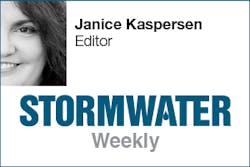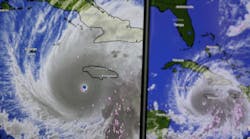
Although FEMA has been updating flood maps for years, many homeowners around the country are still catching up to the implications of that process and what it might mean to their flood insurance rates.
Many people—including some at a local meeting with FEMA representatives this past week in the city where I live—were surprised to learn that the most coverage they can purchase through FEMA’s National Flood Insurance Program for a residence is $250,000, plus an additional $100,000 of coverage for the contents. (Owners of non-residential buildings can purchase up to $500,000 of coverage for the structure, and that much again for the contents.)
Although FEMA has been updating flood maps for years, many homeowners around the country are still catching up to the implications of that process and what it might mean to their flood insurance rates. Many people—including some at a local meeting with FEMA representatives this past week in the city where I live—were surprised to learn that the most coverage they can purchase through FEMA’s National Flood Insurance Program for a residence is $250,000, plus an additional $100,000 of coverage for the contents. (Owners of non-residential buildings can purchase up to $500,000 of coverage for the structure, and that much again for the contents.) [text_ad] The real shock for many, though, was that hundreds of parcels of land will soon be included in a Special Flood Hazard Area—a high-risk area FEMA has designated as having a 1% chance of flooding in any given year. Most federally backed mortgages require homes in a SFHA to have flood insurance. The new boundaries take effect in November, but homeowners who purchase or renew their policies now, while they’re still technically outside the SFHA, can get lower rates for the coming year. The lowest rates for properties outside the SFHA are currently just over $400 per year, a representative explained; the highest rates for properties inside the SFHA will run to as much as $6,000 per year. The National Flood Insurance Program has gone through many changes, and a great deal of controversy, some of which is detailed in this 2014 article from Stormwater magazine. Much of the debate centers on making flood insurance rates reflect actual risk—which makes them prohibitively expensive for many homeowners. How have the revised flood maps—technically called Flood Insurance Rate Maps, or FIRMs—been received in your area, particularly if you’re on the coast or otherwise in a high-risk location?The real shock for many, though, was that hundreds of parcels of land will soon be included in a Special Flood Hazard Area—a high-risk area FEMA has designated as having a 1% chance of flooding in any given year. Most federally backed mortgages require homes in a SFHA to have flood insurance. The new boundaries take effect in November, but homeowners who purchase or renew their policies now, while they’re still technically outside the SFHA, can get lower rates for the coming year. The lowest rates for properties outside the SFHA are currently just over $400 per year, a representative explained; the highest rates for properties inside the SFHA will run to as much as $6,000 per year.
The National Flood Insurance Program has gone through many changes, and a great deal of controversy, some of which is detailed in this 2014 article from Stormwater magazine. Much of the debate centers on making flood insurance rates reflect actual risk—which makes them prohibitively expensive for many homeowners. How have the revised flood maps—technically called Flood Insurance Rate Maps, or FIRMs—been received in your area, particularly if you’re on the coast or otherwise in a high-risk location?About the Author
Janice Kaspersen
Janice Kaspersen is the former editor of Erosion Control and Stormwater magazines.


